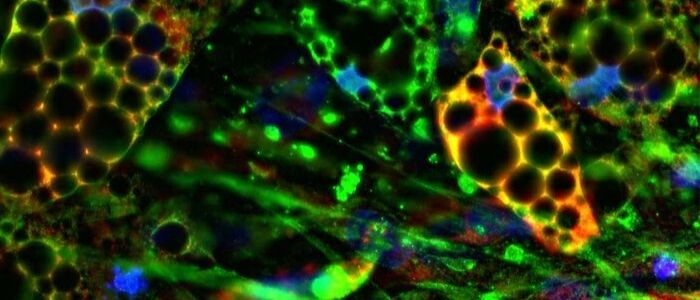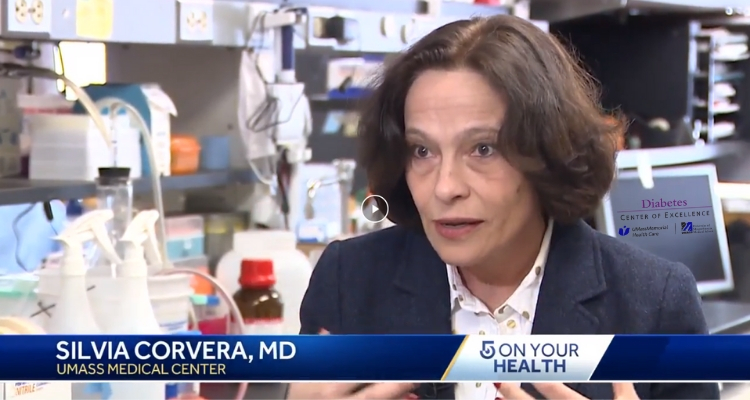The Corvera Lab Discovered New Fat Cells with Specialized Functions in Human Metabolism
Date Posted: Friday, September 20, 2019
A recent study from the laboratory of Silvia Corvera, MD, published in the Proceedings of the National Academy of Sciences, determined that there are more types of fat cells in the human body than originally thought. Prior research had shown that there were two types of fat cells, white and beige, however this research uncovered that there are at least five types of human fat cells. While they all look similar, these specialized cells each play different roles in the way that they affect human metabolism. The specialized human fat cells are derived from specific types of stem cells.
Adipocytes
Adipocytes are cells that make adipose tissues, which we know simply as fat. Every individual, no matter their weight or body type, has fat distributed throughout their body. There are many factors which can cause people to have too much or too little fat; both conditions increases the risk for type 2 diabetes (T2D).
 “There’s an overwhelming stigma attached to weight gain, despite the fact that weight gain – as well as weight loss – often has a medical origin,” says Dr. Silvia Corvera, a professor of molecular medicine at UMass Chan Medical School who holds the Endowed Chair in Diabetes Research. “One can develop T2D while only being a few pounds overweight. Conversely, people with lipodystrophy – a condition in which the body can’t manufacture fat – are also at considerable risk. My lab focuses on studying adipocytes so that we can better understand the role they play across a range of medical conditions.”
“There’s an overwhelming stigma attached to weight gain, despite the fact that weight gain – as well as weight loss – often has a medical origin,” says Dr. Silvia Corvera, a professor of molecular medicine at UMass Chan Medical School who holds the Endowed Chair in Diabetes Research. “One can develop T2D while only being a few pounds overweight. Conversely, people with lipodystrophy – a condition in which the body can’t manufacture fat – are also at considerable risk. My lab focuses on studying adipocytes so that we can better understand the role they play across a range of medical conditions.”
Dr. Corvera’s lab is currently investigating human cell therapy, which consists of using the body’s own cells to increase metabolism, as a possible treatment for T2D or its complications. Cell therapies are already being used to treat certain types of cancer.
“Fat tissue is unusual in that it can grow a lot; in fact, few tissues in the body can grow as much as fat tissue,” she notes. “In my lab, we hypothesized that it would be possible to grow new, healthy adipocytes from a small sample of a person’s fat in vitro, and then developed techniques to do that. When we introduced those new, healthy fat cells into a mouse with diabetes, the mouse got better.”
Beige Fat
In 2017, Dr. Corvera and her colleagues proved that rare “beige” cells, known to attack fat in our body, could be obtained from humans. Millions of these beneficial cells can now be produced from a single individual by the techniques developed in the Corvera lab. She’s working within FDA guidelines to move forward with clinical trials to produce beige cells from a person with T2D, grow them in the lab, then implant them back into that person to improve their sugar metabolism.
Related articles
Corvera Lab creates "good fat" as a potential T2D therapy


